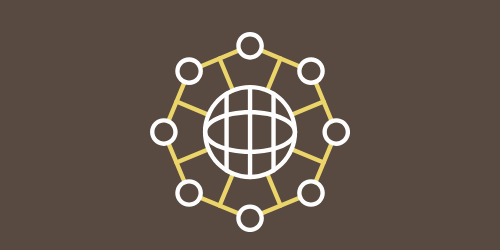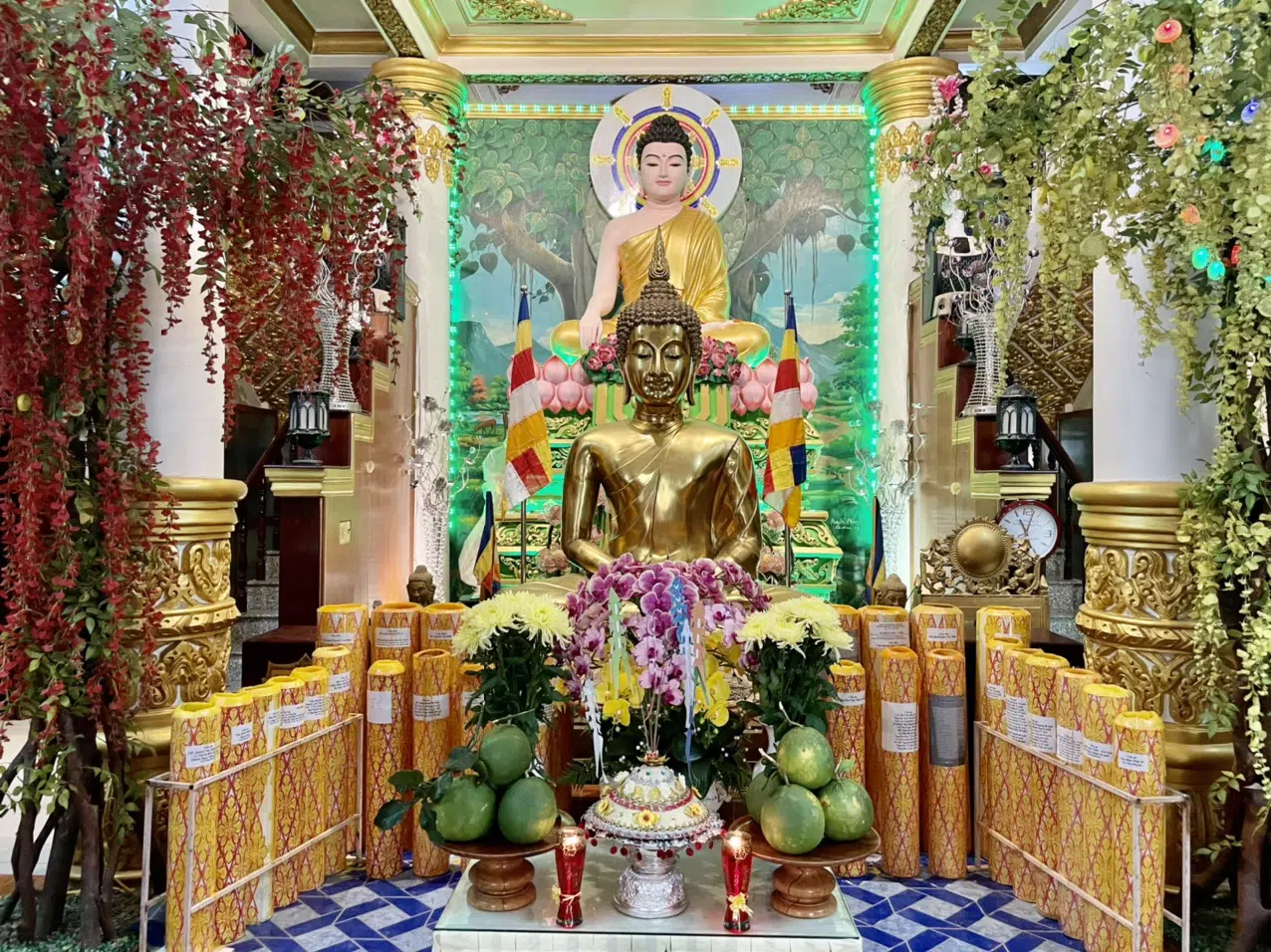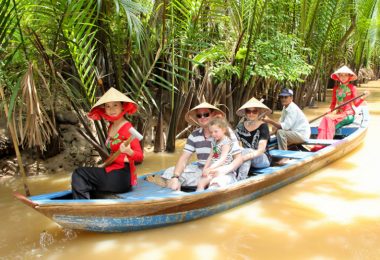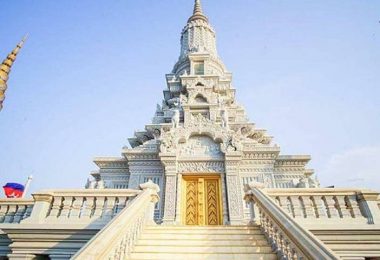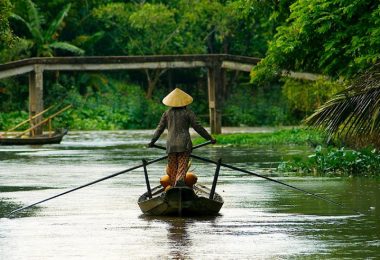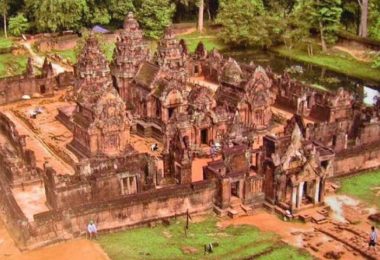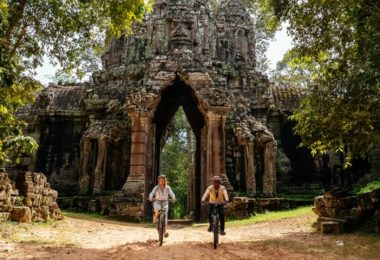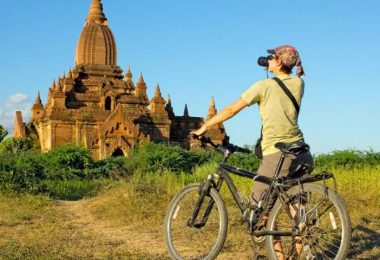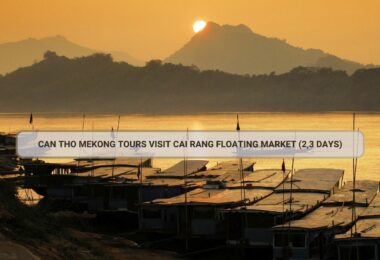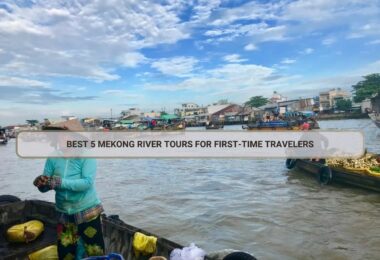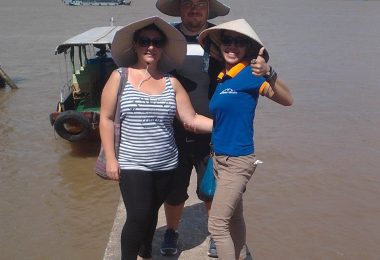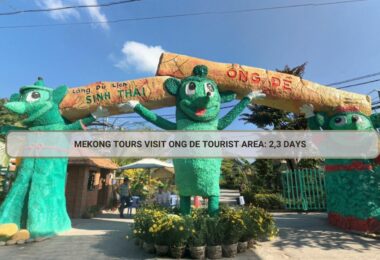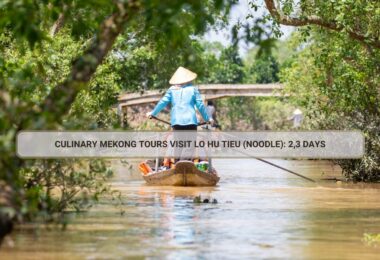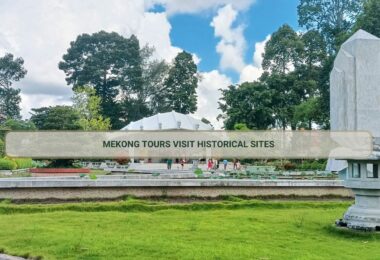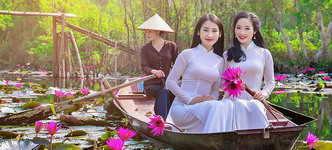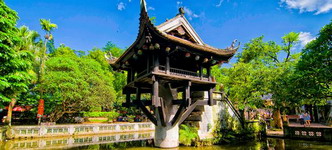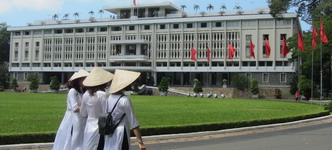Overview:
Right from the beginning of its exploration, Can Tho has been a place of coexistence of Kinh, Hoa, Khmer, and Cham ethnic groups. Therefore, this land in terms of culture – beliefs is very diverse and has interference with each other. However, each ethnic group retains its own cultural identity. Pitu Khosa Rangsay Pagoda, also known as Vien Quang Pagoda, located at 27/18 Mac Dinh Chi Street, An Cu Ward, Ninh Kieu District, Can Tho City is a famous religious place of Khmer people.
Pitu Khosa Rangsay Temple both retains the unique architecture of the Khmer cultural identity and shows the modern architecture of Angkor and Khmer in the south, and the temple is also a favorite destination for tourists to explore. Can Tho.
History:
During the two fierce resistance wars against the French and the American, the pagoda was the place where hundreds of young men who had escaped military service were brought to the temple, where patriotic monks were gathered to fight politically with the Saigon government, demanding freedom. religion, anti-racism…
From 1975 up to now, the pagoda is still the place where Khmer Theravada Buddhist monks and relatives of ethnic Buddhists live. The pagoda is also a free accommodation for many poor Khmer students in the Mekong Delta provinces studying in Can Tho.
In 2008, the pagoda was greatly restored and completed after 4 years of construction, inaugurated in the last week of April 2012. Currently, Pitu Khosa Rangsay pagoda is considered one of the most magnificent and beautiful temples in the region. Mekong Delta. Year-round welcomes Western tourists from all over the world on pilgrimage and a large number of Khmer people in the Southwest come to worship
Architecture:
Like other Southern Khmer temples, Pitu Khosa Rangsay pagoda includes many architectural parts such as the main hall, sala, monk house… Outside the temple is decorated with many patterns such as the stylized Angkor dragon winding in the bags. In front of the main hall, the head of the dragon Angkor – the fairy Keynor – the bird God Krud supports the beams and roofs, the reliefs of the god Chan Hanu-man, the goddess Teppa-nom, and the fire Phanphi equally beautiful.
The main hall of Pitu Khosa Rangsay pagoda facing the east has a ground floor, 3 floors and a spire raising the usable area up to 800m2. The roof of the main hall is designed with 3 levels, each level is divided into 3 folds to form the roof structure system. The roof levels with curved roof corners, carved images on the two gables, on the roof tower… All are done meticulously, sophisticatedly, combined with original colors and standard concoctions to show show the talented penmanship and high aesthetic level of the Khmer people in the South.
+ The first floor of the main hall is the rear hall where traditional ceremonies are held, Chol Chnam Thmay, Donta… has a spacious space. In the middle is a 1.7-meter-high bronze statue of Shakyamuni Buddha, sitting on a 2-meter-high podium. Underneath is a 1.6 meter long statue of the Buddha entering nirvana and seven other Buddha images (one lying, four bowling, two marble) and two sitting.
+ The 2nd floor, also the rear hall, is the place to organize Khmer Theravada Buddhist ceremonies: Buddha’s Birthday, Buddha Dinh ceremony…. The shrine worships a bronze statue of Shakyamuni Buddha 1.6 meters high, sitting on a 2 meter high pedestal (the statue brought back from Thailand by Mr. Quan Van Can), below are arranged 8 more Buddha statues. Small (including 5 marble Buddha statues and a passing away Buddha image were brought back from Cambodia by Mr. Hang Kin).
+ The third floor is the Main Hall, where the ordination ceremony, ordination ceremony, Sadi, Bhikkhu, Kathina robe-offering ceremony, flower offering and funeral ceremonies, etc. death. The shrine is decorated with three steps. The high step is a bronze statue of Lord Buddha 2.50 meters high (the procession from Thailand is offered by Mr. Quan Van Can). The two lower steps are decorated with more statues of Buddha entering Nirvana, walking in the bowl, etc.
All three floors of the pagoda have 12 wooden windows carved by Vietnamese artisans with 12 skillful reliefs. Each painting carries the content of a folk legend such as a Buddhist story, a story of Rienke.
The pillars in the main hall on the first and second floors, the legs and the head support for the floor are covered with the fire Phan Thiet pattern, the third floor pillar is embossed with the Angkorian pattern of the whole body. Particularly on the third floor, on both sides of the wall are reliefs of the goddess Tepanon – Phanhites plus Phanhi Phlong. In addition, it is decorated with 16 paintings illustrating the life of the Buddha land from birth to nirvana.
Charity:
Many poor Khmer students from neighboring provinces who come to study in Can Tho are allowed to stay in pagodas and eat meals for free, and learn more Khmer language; both doing merit for the temple and studying Buddhist scriptures. In addition, the temple also reserved a number of spacious, clean and decent motel rooms for Khmer monks in other places who had a job to go to Can Tho to have a place to eat and rest peacefully.
